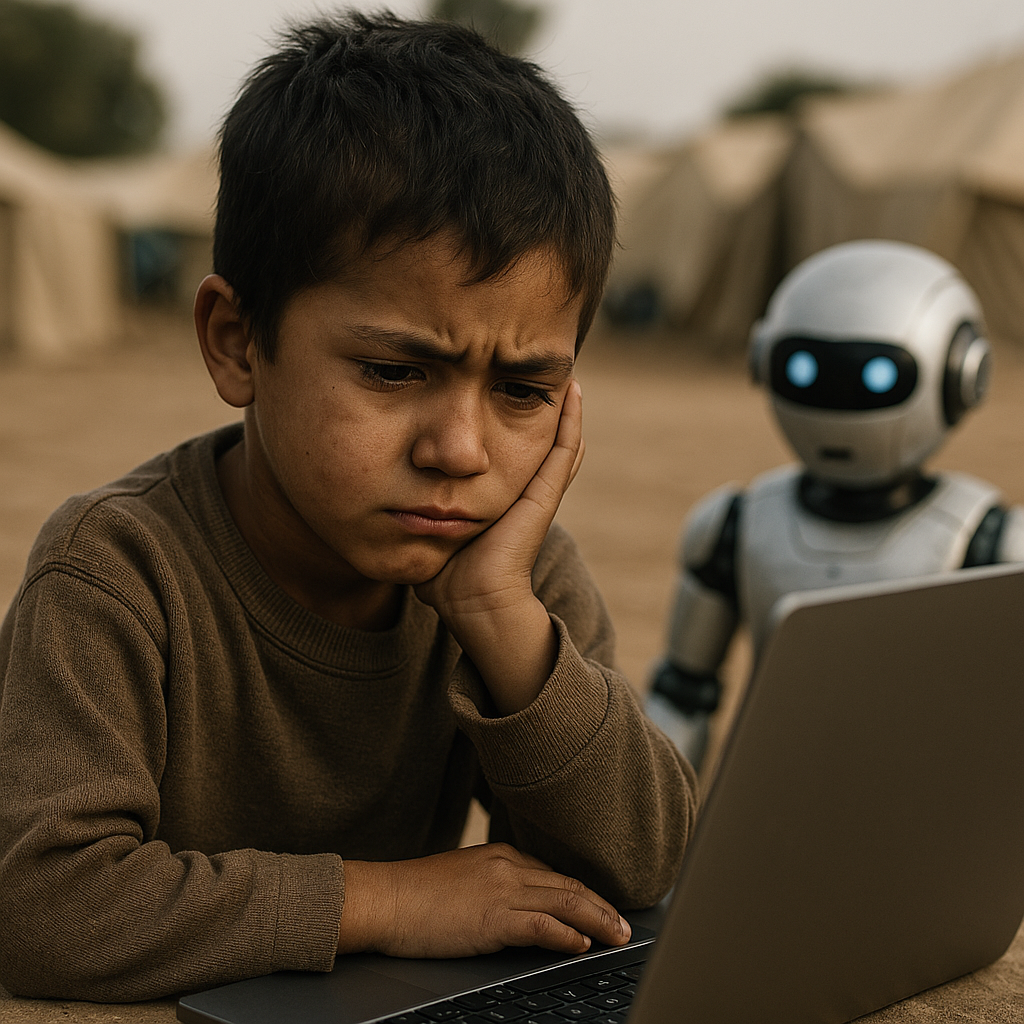AI enhances mental health tracking for millions of displaced children
Mental health has become one of the most urgent yet least studied challenges in humanitarian relief. Refugee children, often subjected to war, violence, and instability, are at high risk of depression, PTSD, and anxiety. However, the fragmented and unstructured nature of refugee health data hampers traditional research methods.

Climate change and conflicts are displacing millions of people worldwide, forcing families to flee their homes and seek refuge in unfamiliar environments where basic needs, including mental health support, are often neglected. A new study proposes a scalable AI-based framework to transform how refugee child mental health is assessed, potentially reshaping humanitarian response through intelligent data processing and reduced misinformation.
The research titled “Harnessing AI Agents to Advance Research on Refugee Child Mental Health”, published in arXiv, benchmarks two Retrieval-Augmented Generation (RAG) pipelines, namely Zephyr-7B-beta and DeepSeek R1-7B, showing how AI can navigate unstructured humanitarian data with greater relevance and minimal hallucination risk.
Can AI solve the crisis of unstructured refugee health data?
Mental health has become one of the most urgent yet least studied challenges in humanitarian relief. Refugee children, often subjected to war, violence, and instability, are at high risk of depression, PTSD, and anxiety. However, the fragmented and unstructured nature of refugee health data hampers traditional research methods.
To address this, the study introduces an AI-powered framework that targets three critical barriers: extraction from unstructured documents, generating research-relevant responses, and minimizing hallucination, where large language models (LLMs) generate incorrect or misleading outputs. Using humanitarian datasets like policy briefs, medical records, and social media narratives, the researchers applied a layered Retrieval-Augmented Generation architecture that enhances factual grounding in AI responses. The approach aims to convert fragmented refugee health records into actionable insights for policymakers and clinicians.
How do Zephyr and DeepSeek AI models compare in processing refugee mental health data?
The study evaluates two RAG pipelines, Zephyr-7B-beta and DeepSeek R1-7B, using a consistent benchmark involving 16 PDF documents and 50 domain-specific queries. Both models extract text, create vector representations, retrieve contextually relevant segments, and generate responses. However, their design and performance diverge significantly.
Zephyr relies on a simple recursive text splitter that creates fixed-size 500-token chunks and uses top-k retrieval (k=3) with a greedy decoding strategy. This makes Zephyr faster and suitable for low-resource environments but prone to content repetition and hallucinations due to limited contextual awareness.
On the other hand, DeepSeek uses a more advanced MarkdownHeaderSplitter to preserve document structure, improving semantic chunking. It employs Maximal Marginal Relevance (MMR) to enhance diversity in retrieval and uses nucleus sampling (p=0.9) with an 8,000-token context window, twice the size of Zephyr's. These features enable DeepSeek to deliver more nuanced and context-rich answers, particularly important for interpreting layered refugee narratives.
In the evaluation, DeepSeek achieved a hallucination rate of 0.12 and an answer relevance score of 0.92, outperforming Zephyr, which scored 0.32 and 0.88 respectively. The use of Opik Evaluation with OpenAI’s GPT-4 as the independent judge added an objective layer to the assessment.
What are the implications for policy and humanitarian research?
The study demonstrates that well-architected AI systems can not only manage vast unstructured humanitarian data but also produce relevant, accurate outputs with reduced risk of misinformation.
DeepSeek's architecture, combining structure-aware segmentation, sophisticated retrieval, and extended context handling, proved to be the most effective. The model’s ability to preserve semantic integrity and reduce hallucination makes it a reliable tool for analyzing sensitive mental health conditions among displaced children.
Moreover, the research shows that AI can aid in addressing the digital divide by proposing voice-based LLM interfaces and low-bandwidth deployment options, especially for low-literacy refugee populations. The study also emphasizes the need for domain-specific training, cultural sensitivity, and interdisciplinary collaboration among AI developers, mental health professionals, and migration researchers.
Future work will focus on multimodal integration, combining text with images and video, and continuous hallucination control using next-generation LLMs.
- FIRST PUBLISHED IN:
- Devdiscourse










